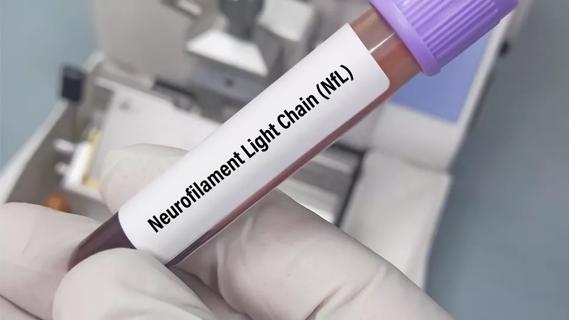Key findings and what it could mean for identifying high-risk patients

By Tatiana Falcone, MD; and Angela Miniard, MEd
Advertisement
Cleveland Clinic is a non-profit academic medical center. Advertising on our site helps support our mission. We do not endorse non-Cleveland Clinic products or services. Policy
Suicide is the second leading cause of death among 15 to 24-year-olds and accounts for 13% of all adolescent deaths annually. Suicidal ideation and suicide attempts are frequent in adolescents; 22% seriously considered suicide in the last year, 15% made a plan and 8% reported that they had attempted suicide. Lifetime prevalence of attempt peaks between 16 and 18 years of age. Suicide remains the most serious complication of any psychiatric disorder, and the suicide rates in the U.S. have not decreased in the last 20 years. In 2012, there were 12.5 deaths per 100,000 habitants.1
Every year, approximately 157,000 youths receive medical care for deliberate self-harm in emergency departments (ED) throughout the U.S. Prevention of suicide-related deaths is a major unmet public health challenge. The challenge is further complicated by the fact that nearly 80% of suicidal patients who subsequently died by suicide denied suicide ideation during their last communication with a hospital.2 It is imperative to identify biological markers to identify those at risk for suicide.
Adolescents admitted to an inpatient psychiatry unit secondary to deliberate self-harm are one of the highest-risk populations. Within this population, the risk for a second suicide attempt in the same year is as great as 15%-30%.2 Patients with a previous history of deliberate self-harm behaviors have a higher risk for a future suicide attempt after discharge.2
We designed a longitudinal study of adolescents ages 12 to 17 admitted to the inpatient child and adolescent psychiatric unit after suicidal ideation, behavior or attempt. The suicidal ideation or attempt must have occurred in the seven days prior to hospital admission. The following patients were excluded from the study: those with psychosis, neurologic, autoimmune disorders, or were taking antibiotics or steroids in the two weeks prior, had a substance dependence diagnosis, a BMI greater than 40 kg/m2, current pregnancy or delivery within the prior month, history of autism spectrum disorder, or IQ < 70.
Advertisement
A healthy adolescent control group with no history of any psychiatric illness or treatment except ADHD, no history of suicide attempts, no family history of suicide attempts, or any of the same exclusion criteria in the patients were also recruited. In total, the study included 59 adolescents with suicidal ideation, behavior or attempt and 21 healthy volunteers. The study was IRB approved, and all participants underwent informed consent at the time of the enrollment.
Assessment of psychiatric symptoms was conducted using a structured interview, Kiddie Schedule of Affective Disorders and Schizophrenia (K-SADS), and several psychiatric scales to measure the severity of suicidal ideation, including Columbia Suicide Severity Rating Scale (C-SSRS), Suicidal Ideation Questionnaire (SIQ), and others to measure anxiety and the impact of trauma and depression.
Blood samples were collected on the same day of clinical assessments at baseline and discharge. The following biomarkers were measured: S100B, kynurenic acid, quinolinic acid, picolinic acid, nicotinic acid ribonucleotide (NTA), tryptophan, serotonin, IL-1β, IL-6, IL-8 and TNF-α. There were no significant differences across key demographics (age, gender, BMI, puberty level).
The peripheral inflammatory markers are highly skewed and, therefore, were transformed into a natural log. We used mixed-effects models to assess the association between biomarkers and suicidality. Comparing the patient and the control group, the difference of means indicate that the patient group had higher log levels of IL8 (P = 0.003) and NTA and significantly lower levels for log serotonin (P = < .001).
Advertisement
Patients continued to be followed for one year. Out of the 59 patients, 23 were readmitted to the hospital for the same reason over the follow-up period (39%). The only biomarker associated with the recurrence of suicidal ideation was log serotonin. Lower levels of serotonin predicted readmission for suicidal ideation, even after controlling for all demographic variables and trauma (ACE scores).
The results of our study suggest that peripheral inflammation is impacting the kynurenic pathway in suicidal adolescents to metabolize tryptophan, decreasing the production of serotonin in this population. Low levels of serotonin were associated with an increased risk of suicide this population.
Peripheral levels of serotonin could potentially be an important biomarker to further study in suicidal patients, although further research is needed. There is an urgent and critical need to proactively identify patients who present a risk of readmission or complete suicide post-discharge.
About the authors:Dr. Falcone is a child and adolescent psychiatrist at Cleveland Clinic Children’s. Dr. Falcone’s research focuses on innovative treatments to identify and prevent suicide in adolescents and interventions to improve the quality of life of children with chronic illness.
Angela Miniard has a Bachelor of Science in Psychology with Neuroscience concentration from John Carroll University and a Masters of Education in Community Agency Counseling from Cleveland State University. Her current role is Research Regulatory and QA Manager in the Neurological Institute Research Office at Cleveland Clinic.
Advertisement
References
Advertisement
Advertisement

A principal investigator of the landmark longitudinal study shares interesting observations to date

Patient navigator is the bridge across systems

Clinicians desire more personal and professional support to cope with profound loss

5 things a child psychiatrist wishes all pediatricians would do

Perhaps, with caveats: sNfL elevation has low sensitivity and lags MRI activity by at least a month

Correlation found between the biomarker HSD3B1 and resistance to combined hormone therapy and radiotherapy

Research project aims to pinpoint biomarkers that could speed diagnosis

Peer-to-peer videos offer creative solution to help patients while they wait